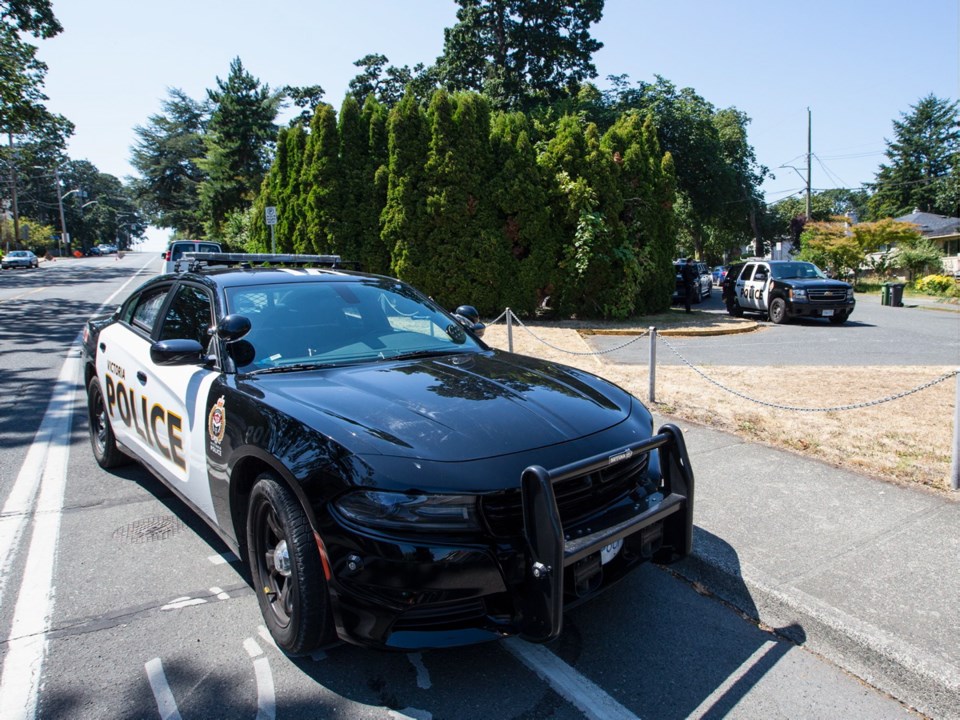A commentary by a retired family physician
I am distressed — as are many other Canadians — by the constant hyperbolic barrage of adverse comments concerning the police — contributing, at least in part, to the incidents reported in the Times Colonist.
It is my opinion that there is not a single cause of this situation but several minor and a couple of major ones. Just a few points to put this subject into context.
Firstly the police have a wide array of duties or tasks to which they are appointed. Within reason they cannot and will not refuse; this does explain why police officers end up performing duties for which they are not best suited or trained, as is documented below.
Policing is a hazardous career. Of all occupations this carries the second highest risk of being killed on the job. (Taxi drivers are at the head of the list.)
Too often there appears to be a juxtaposition of reports in the media concerning American and Canadian police events. This, at best, confuses the facts, and at worst undermines the respect of the public regarding valuable essential members of a civilized society.
It is often reported that the police are “murdering” Indigenous and Black citizens. Murder is a singularly inappropriate term in this context; murder entails premeditation. Most police encounter deaths are reactive to urgent adversarial circumstances with no opportunity for contemplation.
It is more than unfortunate that the police are having to pick up a mess first generated in about 1980 with the de-institutionalization of mental hospitals. There was an attempt to sell to the public that these patients were being offered freedom and the chance of a “normal” life.
In reality it was cruelly deceitful budget balancing measure.
The actual result was that mentally ill patients self-medicated their symptoms, rapidly resulting in addictions — drugs were readily supplied by drug dealers who then victimized the addicts into petty crime or prostitution.
The police are ready and willing to deal with the petty crime, but they are singularly unsuited to deal with mental health emergencies of which there are many. Such crises require appropriate highly specialized skills.
These services will need to be practised in the context of several rapidly available mental health emergency intervention teams with the police very much in a background role for the safety of members of the team. Too many outcomes under the present circumstances are more than unsatisfactory, causing distress to the patient, families and the involved police officers.
There is widespread reporting of the police picking on unarmed Indigenous and Black Canadians. But let us look at the figures.
Between 2000 and 2017 there were 461 fatal interactions involving the police. This includes situations where victims died of drug overdose, medical complications and cardiac deaths (made more likely by cocaine). Of the 461 fatalities, however, 43 were Black — and of these 33 were armed and 10 unarmed. The unarmed comprise 2.1 per cent of total fatalities; Black persons comprise 3.5 per cent of total population.
Similarly with Indigenous Canadians there were 69 fatalities — of these 57 were armed and 12 were unarmed thus comprising 2.6 per cent of all unarmed fatalities. Indigenous persons comprise 4.9 per cent of the population.
On a more general basis Indigenous persons comprise 14 per cent and the Black 9.3 per cent of total fatalities. This is higher than should be suggested statistically (4.9 per cent and 3.5 per cent). It is therefore encouraging that the Solicitor General Mike Farnworth has recently appointed a special committee of the B.C. legislature to examine the scope of racism in policing as a part of the province’s plan to modernize the 45-year-old Police Act.
Every single killing is a tragedy. Not one can be discounted. Police forces, be they municipal, provincial or federal, have independent review procedures for each adverse event. The members of the review process comprise a cross section of society — strictly at arm’s length from the police.
According to Statistics Canada in 2017-2018 there were 12.5 million calls for service across the country. During that time there was a total of 27 fatalities involving the police.
That is an event rate of 0.000216 per cent, or to put it in a more meaningful term, one in every 460,000 calls. Though zero is the ideal, these figures do not indicate an uncaring or careless police force.
Meanwhile, in the background, police officers go to work in the full knowledge that they could be killed. Certainly much more likely than most of us.
The power invested in the police is enormous, and with this goes a burden of responsibility.
I have confidence in the independent review process. I have confidence in the competence, training and subsequent care delivered by our Canadian police forces. They are not perfect and those 27 fatalities should be lower and lower — but in the meantime, while this is being attempted, let society not demoralize RCMP Const. Nancy Saggar and her courageous colleagues.



